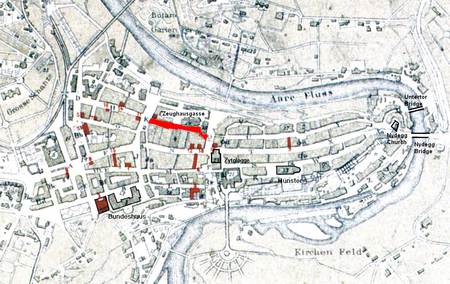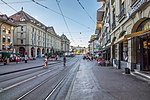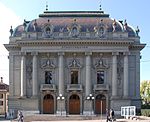Zeughausgasse
Cultural property of national significance in the canton of BernOdonyms referring to a buildingOld City (Bern)Streets in BernUse British English from August 2017

The Zeughausgasse (Armory lane) is one of the streets in the Old City of Bern, the medieval city center of Bern, Switzerland. It is part of the Innere Neustadt which was built during the second expansion in 1255 to 1260. The eastern end is at Kornhausplatz while the western end is at Waisenhausplatz. It is part of the UNESCO Cultural World Heritage Site that encompasses the Old City.
Excerpt from the Wikipedia article Zeughausgasse (License: CC BY-SA 3.0, Authors, Images).Zeughausgasse
Zeughausgasse, Bern
Geographical coordinates (GPS) Address Nearby Places Show on map
Geographical coordinates (GPS)
| Latitude | Longitude |
|---|---|
| N 46.94889 ° | E 7.44583 ° |
Address
Zeughausgasse
Zeughausgasse
3011 Bern (Stadtteil I)
Bern, Switzerland
Open on Google Maps









